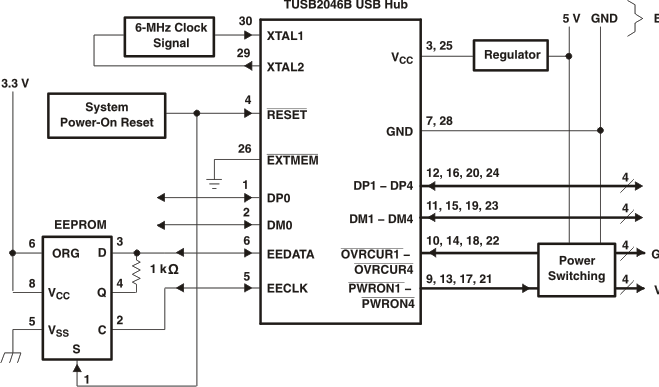SLLS413L February 2000 – June 2017 TUSB2046B , TUSB2046I
PRODUCTION DATA.
- 1 Features
- 2 Applications
- 3 Description
- 4 Revision History
- 5 Description (Continued)
- 6 Pin Configuration and Functions
- 7 Specifications
- 8 Detailed Description
- 9 Application and Implementation
- 10Power Supply Recommendations
- 11Layout
- 12Device and Documentation Support
- 13Mechanical, Packaging, and Orderable Information
Package Options
Mechanical Data (Package|Pins)
Thermal pad, mechanical data (Package|Pins)
- RHB|32
Orderable Information
8.4.1 Vendor ID and Product ID With External Serial EEPROM
The EXTMEM pin enables or disables the optional EEPROM interface. When the EXTMEM pin is high, the product ID (PID) displayed during enumeration is the general-purpose USB hub. For this default, pin 5 is disabled and pin 6 functions as the GANGED input pin. If custom product ID (PID) and vendor ID (VID) descriptors are desired, the EXTMEM pin must be low (EXTMEM = 0). For this configuration, pins 5 and 6 function as the EEPROM interface with pins 5 and 6 functioning as EECLK and EEDATA, respectively. See Table 1 for a description of the EEPROM memory map. A block diagram example of how to connect the external EEPROM if a custom PID and VID are desired is shown in Figure 8.
 Figure 8. Typical Application of the TUSB2046x USB Hub
Figure 8. Typical Application of the TUSB2046x USB Hub